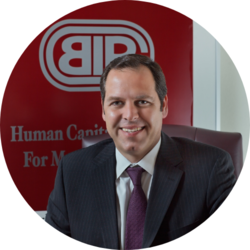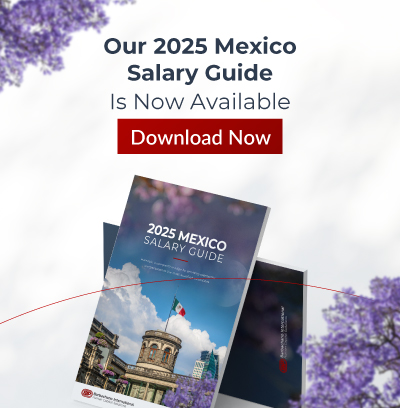
The movies Blade Runner, The Terminator, and I, Robot, among others, envisaged a 21st century with flying cars, synthetic humans, and AI capabilities that would dominate and overtake human life. Well, here we are, approaching the year 2030, and things haven’t altered quite that much. Still, the workplace is poised for profound changes driven by evolving technology, employee expectations, and a growing focus on sustainability. These changes will redefine how businesses operate, how employees interact, and what it means to work effectively. Here’s a look at the primary trends shaping the future workplace and how companies and individuals can prepare for what’s ahead.
Remote and Hybrid Work: A New Standard
Remote work was initially driven by necessity during the pandemic, but it has transformed into a long-term fixture of modern business. According to software engineer Arman Khalid, by 2030, hybrid work models—blending remote work with in-person teamwork—will dominate. He believes that businesses will increasingly adopt remote-first policies to attract global talent, allowing employees to work from anywhere.
The World Economic Forum anticipates that by that time, 25% of global digital jobs will be performed remotely, especially in higher-income roles like software development and financial services. Global management consulting firm McKinsey & Company says that in developed economies, up to 38% of executives see their employees working remotely for two or more days per week in the future. However, full-time remote work will probably stick to certain industries (technology, finance, marketing, and customer service, for example), while hybrid work will be the main approach in most fields.
The CEO Magazine predicts that hybrid models will actually become the default in most industries, with technology supporting this shift. Advancements in virtual reality (VR) and augmented reality (AR) will allow remote workers to take part in virtual meetings that feel surprisingly similar to the in-person collaboration we’re used to now. These tools will help bridge the gap between remote and in-office employees, so far-flung teams can still be cohesive and productive.
This being the case, businesses will need to rethink how they measure employee performance. For instance, the traditional “hours worked” metric will fade, replaced by outcome-based performance evaluations (Hardskills). Companies will need to focus more on the value and results employees produce rather than where or when they do the work. This mindset shift requires businesses to trust their employees more, empower them to work autonomously, and give them the flexibility to manage their own schedules. One of the greatest benefits for organizations that embrace this new approach is that they’ll be better able to attract top talent in a competitive market. If you don’t offer these options, trust me: Someone else will.
Employee Well-Being: The Next Frontier in Workplace Wellness
By 2030, instead of being viewed as an added benefit, holistic employee wellness will be at the heart of workplace strategy. Digital transformation thought leader Dion Hinchcliffe says that wellness-tracking technologies will soon become a bigger part of corporate life. Wearables like fitness trackers and smartwatches will keep tabs on employee health metrics in real time, enabling companies to build personalized wellness programs that will hopefully prevent employee burnout and help your people take care of their health.
And I’m not just talking about physical health. Mental health, in particular, is expected to take center stage. According to the American Psychological Association, supporting mental health is one of the best ways to build a happier and more productive workforce. Companies are expected to offer more resources—like counseling services and apps for mindfulness and stress management—to help employees feel supported at work and in their personal lives.
Work-life balance will also be redefined. Flexible hours, four-day work weeks, and remote options may well become standard in many organizations. The hope is that such changes will create an environment where employees can work effectively without giving up the personal time that’s so essential to their well-being and peace of mind. Corporate Wellness Magazine notes that focusing on overall well-being can improve employee retention, engagement, and productivity because happier workers tend to be more motivated.
AI and Automation: Transforming Workflows
We’re already seeing artificial intelligence (AI) take its place in the world, and by 2030 it will have an even greater impact. AI automates routine tasks, leaving employees free to focus on more creative and strategic endeavors. It’s sure to become even more deeply embedded in everyday business processes, handling everything from customer service interactions to data analysis and decision-making. Rather than replacing jobs (as some people fear), though, AI will work alongside employees, freeing them from repetitive tasks so they can do the things that require human insight and creativity. It will also take over everyday tasks like scheduling, managing resources, and optimizing workflows. Personal AI assistants will likely become common as well.
Beyond improving efficiency, AI will help businesses recognize trends and predict what’s coming next. For example, predictive analytics help companies anticipate customer needs, fine-tune supply chains, and develop products based on current market data. In this way, AI’s growing role will make businesses more agile and responsive to change.
While AI might reduce the need for some administrative roles, it will open new opportunities for people who excel at managing and interpreting data or creative problem-solving. The key for leaders will be to make sure workers have the skills to grow with AI. Businesses will need to invest in learning and development programs to keep their teams ahead of these changes because like it or not, they’re coming.
Learning and Development: Immersive and Continuous
By 2030, learning and development will take on a new shape, moving from traditional methods to more immersive, continuous models. Virtual reality (VR) and augmented reality (AR) will transform employee training with simulations that let workers practice new skills—instead of only learning about them—in a risk-free environment. These tools will make learning more interactive and engaging, improving knowledge, retention, and practical application.
Ongoing learning is a non-negotiable part of succeeding in this rapidly-changing world, which is why microlearning (bite-sized educational content on demand) will become standard. This approach lets employees quickly adapt to new tools, processes, and business needs without taking too much time away from their daily activities. Studies show that microlearning can improve retention rates by as much as 60% and increase course completion rates by a wide margin as well, compared to traditional methods.
To stay ahead of the game in coming years, companies will also need to create a culture of lifelong learning. Savvy employers will encourage employees to pursue continuous professional development, and to that end, they’ll invest in learning platforms that offer a variety of formats, from short courses to immersive training sessions. Respected talent assessment company The McQuaig Institute says, “When employees are given the tools, training, and opportunities to grow, they bring new ideas, solutions, and energy to the table.” Companies that prioritize employee development will create a workforce much better equipped to handle future challenges.
The Green-Collar Workforce: Jobs of the Future
Far from being a trend, sustainability is becoming a central part of business strategy and driving the growth of the “green-collar” workforce, with new jobs emerging around renewable energy, waste reduction, and sustainable business practices. According to reports from the World Economic Forum, employment in the renewable energy sector alone could grow to over 38 million jobs globally by 2030.
Future green-collar jobs will involve implementing sustainable practices and require leaders who drive innovation. Experts in this field will need to design eco-friendly supply chains, develop sustainable products, and find ways to minimize waste. These roles will help companies meet environmental regulations and be in line with global sustainability efforts. In the process, they will strengthen their reputations and become employers of choice!
Sustainability is going to influence every part of a company, from how things are made to how they’re marketed and even how people are hired. Marketing teams will need to feature the company’s environmental initiatives, while HR will look for people whose values support sustainability goals.
Networks of Excellence: Collaboration across Borders
The traditional command-and-control management style will likely be replaced with more flexible, decentralized ways of working by 2030. In this approach, groups of people from different areas, with differing forms of expertise, work together to solve complex problems. These networks break down the usual office silos, bringing in fresh perspectives, creativity, and new ideas.
Tools like Microsoft Teams and Slack will be the backbone of this movement. As more people work remotely or in hybrid setups, staying connected and keeping ideas flowing smoothly will depend on these kinds of platforms.
While already a reality, in the next few years, companies will rely even more on these decentralized networks to react quickly to challenges. Instead of being stuck to a physical location, teams will be able to pull in talent and knowledge from around the world, making the whole operation more agile and innovative.
Preparing for the Future Workplace
As 2030 approaches, businesses need to start preparing for some major changes. The companies that will stand out are those that invest in technology, prioritize employee well-being, and make sustainability a core part of their strategy. Because industries these days seem to morph with market changes in the blink of an eye, employees will need to keep developing new skills and staying adaptable. Being open to learning and growth will be more important than ever. The workplace of the future will combine technology, flexibility, and sustainability, so organizations that prepare themselves now by investing in the right tools and supporting their teams will be primed to succeed in this new environment.

By Fernando Ortiz-Barbachano
President & CEO of Barbachano International
Barbachano International (BIP) is the premier executive search and leadership advisory firm in the Americas with a focus on diversity & multicultural target markets. Since 1992, BIP and its affiliates have impacted the profitability of over 50% of Fortune 500 Companies. BIP has been recognized by Forbes as Americas’ Best Executive Search Firms and currently ranks #10 and #3 on the West Coast.

